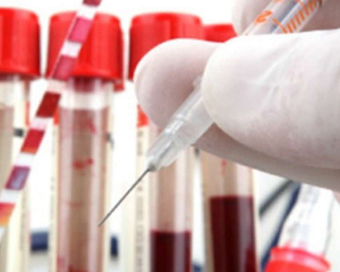 PM Modi visit USA
PM Modi visit USA Only the mirror in my washroom and phone gallery see the crazy me : Sara Khan
Only the mirror in my washroom and phone gallery see the crazy me : Sara Khan Karnataka rain fury: Photos of flooded streets, uprooted trees
Karnataka rain fury: Photos of flooded streets, uprooted trees Cannes 2022: Deepika Padukone stuns at the French Riviera in Sabyasachi outfit
Cannes 2022: Deepika Padukone stuns at the French Riviera in Sabyasachi outfit Ranbir Kapoor And Alia Bhatt's Wedding Pics - Sealed With A Kiss
Ranbir Kapoor And Alia Bhatt's Wedding Pics - Sealed With A Kiss Oscars 2022: Every Academy Award Winner
Oscars 2022: Every Academy Award Winner Shane Warne (1969-2022): Australian cricket legend's life in pictures
Shane Warne (1969-2022): Australian cricket legend's life in pictures Photos: What Russia's invasion of Ukraine looks like on the ground
Photos: What Russia's invasion of Ukraine looks like on the ground Lata Mangeshkar (1929-2022): A pictorial tribute to the 'Nightingale of India'
Lata Mangeshkar (1929-2022): A pictorial tribute to the 'Nightingale of India' PM Modi unveils 216-feet tall Statue of Equality in Hyderabad (PHOTOS)
PM Modi unveils 216-feet tall Statue of Equality in Hyderabad (PHOTOS)Hockey India has announced a 54-member core probable squad for the upcoming senior men’s
- Satwik-Chirag return as BAI names 14-strong squad for BWF Sudirman Cup Finals 2025
- Men’s Sr Hockey Nationals to be played in division-based format from April 4
- Mensik denies Djokovic 100th title in Miami final
- KIPG: Son of a vegetable vendor, Bihar’s Jhandu Kumar eyes Worlds, 2028 Paralympics
- Hardik Singh credits hard work and team unity for receiving HI Midfielder of the Year award
DNA test on river waters reveals fish diversity Last Updated : 13 Apr 2017 10:37:03 AM IST 
File photo
In a first, US scientists have monitored a spring fish migration through DNA tests on water samples, a study said on Wednesday.
"Environmental DNA" or eDNA, strained from one-litre samples drawn weekly from New York's East and Hudson rivers over six months last year, revealed the presence or absence of several key fish species passing through the water on each test day.
The weekly data snapshots created a moving picture that largely reinforced and correlated with knowledge from migration studies conducted over many years with fishnet trawls.
The Rockefeller University study, published on Wednesday in PLoS ONE, pioneers a way to monitor fish migration that involves a fraction of the effort and cost of trawling, all without harming the fish.
eDNA is now also being assessed as an easy way to estimate the abundance of diverse fish species and other forms of marine life in the dark waters of rivers, lakes, and seas.
The paper, "Aquatic Environmental DNA Detects Seasonal Fish Abundance and Habitat Preference in an Urban Estuary", is authored by Mark Stoeckle and Director Jesse Ausubel of the Program for the Human Environment of The Rockefeller University.
John Bowne high school student Lyubov Soboleva and Rockefeller University scientist Zachary Charlop-Powers co-authored the paper.
As they swim, the fish leave traces of their DNA in the water, sloughed off their slimy, gelatinous outer coating or in excretions, for example.
"Researchers in Europe first demonstrated that relatively small volumes of freshwater and seawater environments have enough invisible bits of DNA floating in them to detect dozens of fish species," Stoeckle said."By conducting a series of tests over time, collecting surface water from the same point on both the Hudson and East rivers once a week for six months, wea¿ve successfully demonstrated a novel way to record fish migration."
"Our work also offers clear new insight into the durability of DNA in the water, which persists despite currents and tides with a goldilocks quality just right for research. If the DNA disappeared too quickly, we couldn't obtain an informative sample; if it persisted for too long, there would be too much DNA in the water ' title=' DNA in the water '>DNA in the water to yield useful, timely insights."
In all, Stoeckle and colleagues obtained the DNA of 42 fish species, including most (81 percent) of the species known to be locally abundant or common and relatively few (23 percent) of the uncommon ones.
"We didn't find anything shocking about the fish migration -- the seasonal movements and the species we found are known already," said Stoeckle.
"That's actually good news, adding to evidence that eDNA is a good proxy. It amazes me that we can get the same information from a small cup of water and a large net full of fish."
According to him, some species couldn't yet be distinguished, notably some in the herring family, which have identical sequences in the region of DNA used for testing.
As well, some of the DNA obtained couldn't be identified because the DNA reference library, while steadily growing, is incomplete.
"We knew that we had DNA from a fish, but couldn't pinpoint the species," Stoeckle added.
The work on aquatic DNA was carried out as part of the Marine Science and Policy Initiative of the Program for the Human Environment of The Rockefeller University and the Urban Coast Institute of Monmouth University.IANS For Latest Updates Please-
Join us on
Follow us on








172.31.16.186







